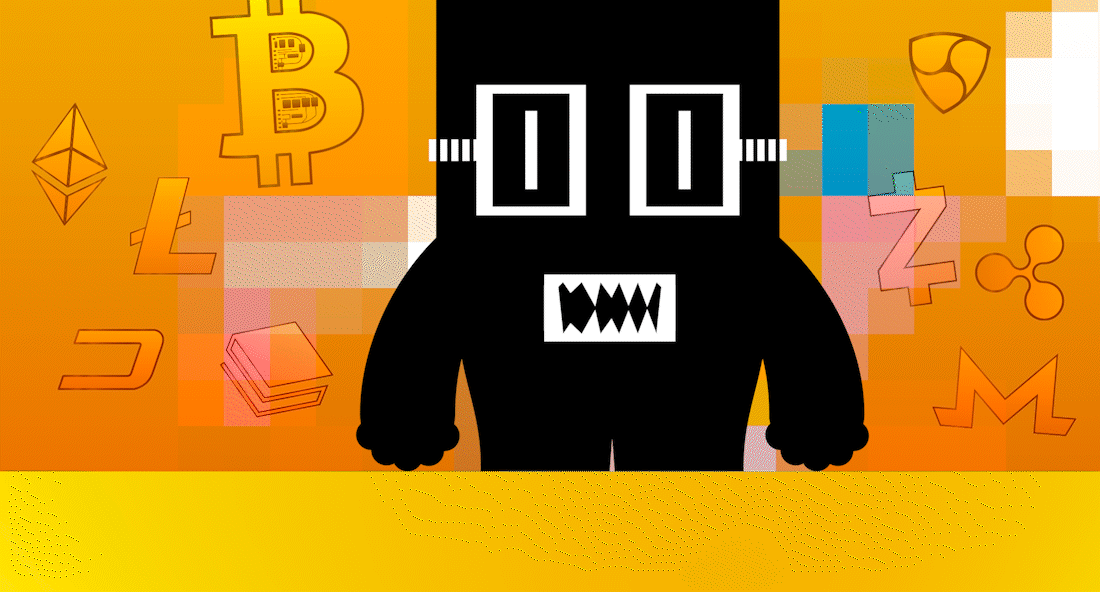Nixon, Crypto and the Goblins of Newness
- 033022
- 4 minutes
The arc of Halloween, for many of us, went from fun, polyester costumes and a plastic pumpkin carryall to the teen-approved pillow sack, both full of the strangest confections a child could hope to choke down in one sitting. Beneath the gasping could be heard the faint cries of a languishing pancreas and the early makings of adult-onset type 1 diabetes.
Halloween day in 2008 was a balmy 68° in Cleveland Ohio as the city's youth pawed the ground, eager to breach the gate and hit their very own sugar-lined Midwestern streets. They were gleefully unaware of the evil, one Satoshi Nakamoto was about to drop by means of a fiendish white paper titled "Bitcoin: A Peer-to-Peer Electronic Cash System."
Fast forward almost 14 years and the world is still trying to wrap its brain around what Nakamoto, the presumed pseudonymous person(s) who developed Bitcoin, proposed: a digital currency designed to work as a medium of exchange through a computer network operating free of any central authority. Alas, the code writing was on the wall.
In practice, does Bitcoin portend economic freedom or anarchy? Is it a viable currency? And what is its present investment potential? To be frank, we're not going to touch that first question. But we'll take a stab at the latter two. To begin though, let's talk about currency itself.
The most common form of currency in use today is called fiat currency—that is, money that is made legal tender by government decree (or "fiat"), as opposed to currency backed by some commodity. So rather than deriving its value from some corresponding amount of gold or silver, fiat money depends on the stability of the issuing government, as well as its supply vs. demand dynamic. It was August 1971 when Nixon made the move that spelled the end of the last vestiges of the gold standard. Today, virtually every country in the world uses fiat currency.
Given that fiat currency lacks an intrinsic value outside that which is socially agreed upon, perhaps Bitcoin has a little more in common with our USD than it seemed at first glance. And like the dollar, the number of Bitcoins in circulation is finite: although some have yet to be "mined," they'll ultimately cap out at 21 million. Plus, although anti-counterfeiting measures in US currency have become more complex since the ‘90s, Bitcoin's very nature makes counterfeiting it infeasible. However, unlike the USD, Bitcoin has no government backing it, no intermediary banks to propagate its use and importantly, no fiat authority to manually counter a financial crisis—as the Federal Reserve did in 2008.
For currency in general, economic science determines six basic properties: durability, portability, divisibility, uniformity, limited supply, and acceptability. Any proposed tender that doesn't check all six boxes simply won't prove useful and can be expected to fall into the dustbin of history in relatively short order. So how does Bitcoin measure up?
Fairly well, actually. We've touched on Bitcoin's scarcity and uniformity, which both give the U.S. dollar a run for its money (pun intended). It's also more divisible than other currencies, in that it can be divided to the eighth decimal place. And because it's designed to be decentralized, it's virtually impossible for the shared ledger (i.e., the "blockchain") to be destroyed—so it's assuredly durable. However, at least for now, its portability and acceptability render it impractical. Storage of your "digital wallet" is still fairly cumbersome, and while there are exceptions, most merchants have yet to jump through the hoops necessary to accept Bitcoin.
As a currency, Bitcoin ticks a few important boxes but still has some work to do. This brings us to our final and more practical question: should I think seriously about investing in Bitcoin (or other cryptocurrencies)? Ultimately that's for each investor to decide. But here are some useful points to ponder.
First, what is it about traditional investment vehicles that give them their value? Bonds are simple: they represent the value of a debt you'll be repaid upon maturity. The monetary value of stocks can fluctuate, but that value exists because they represent part ownership of a company. And investing in a commodity relies on that commodity's intrinsic value which, in the case of gold for example, has proven its lasting value over time.
In contrast, it can be hard to pinpoint the value of a decentralized digital currency with such a short history. To date, the primary driver of Bitcoin value has been speculative interest. Its market price has been highly volatile, varying widely from its "fair" or "intrinsic" value (quotes ours, because what even is its fair value?). Moreover, Bitcoin has thus far exhibited the characteristics of a bubble with its radical price run-ups and formulaic pundit mania.
It's a tough call when a proposed innovation is trying to find its legs, and it's fairly impossible to know if it can or will. Regardless, when it comes to our labors to acquire and maintain wealth, shrewdness is key. While the future might bring revolution, and hindsight its clarity, those in the present need to work their moment objectively.
In time we come to warn our children: Beware the secret dangers of a candied linen sack, where Chuckles and chocolates lie in wait for untrained youthful palates. For those in costume as investors, time will tell if crypto is proven trick or treat. Till then, we do well to be cautious of darkened doorsteps, and the dealer down the street who cuts his rock with a promise.
The views and opinions expressed herein are those of the author(s) noted and may or may not represent the views of Beacon Advisory or Lincoln Investment. The material presented is provided for informational purposes only. Nothing contained herein should be construed as a recommendation to buy or sell any securities. Past performance is no guarantee of future results. No person or system can predict the market. All investments are subject to risk, including the risk of principal loss.


